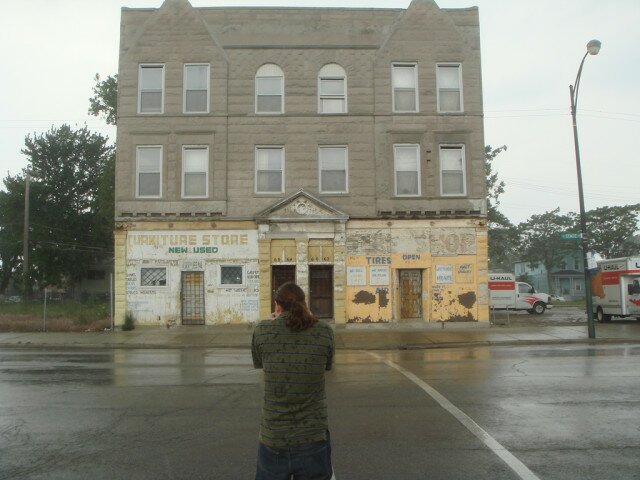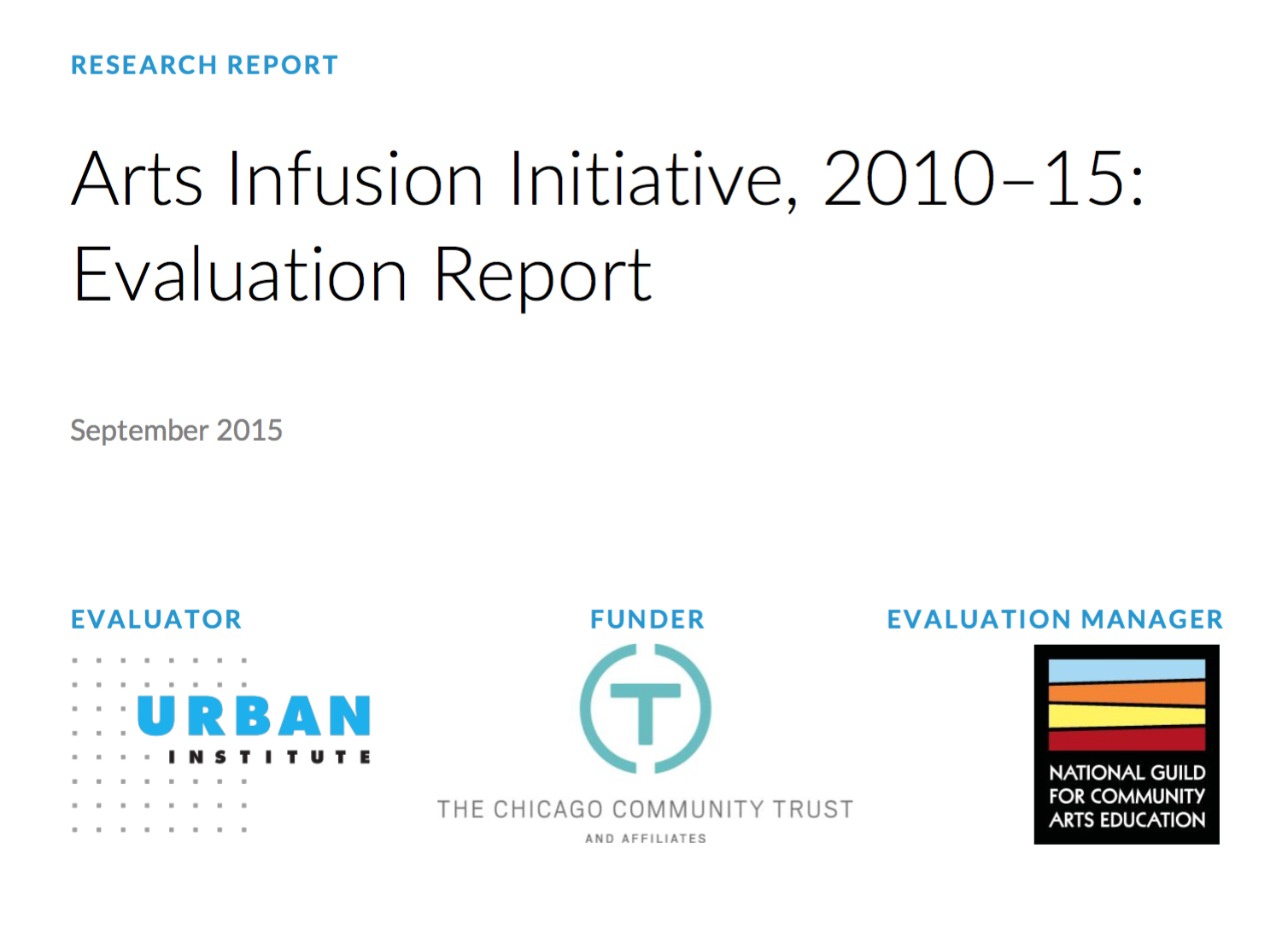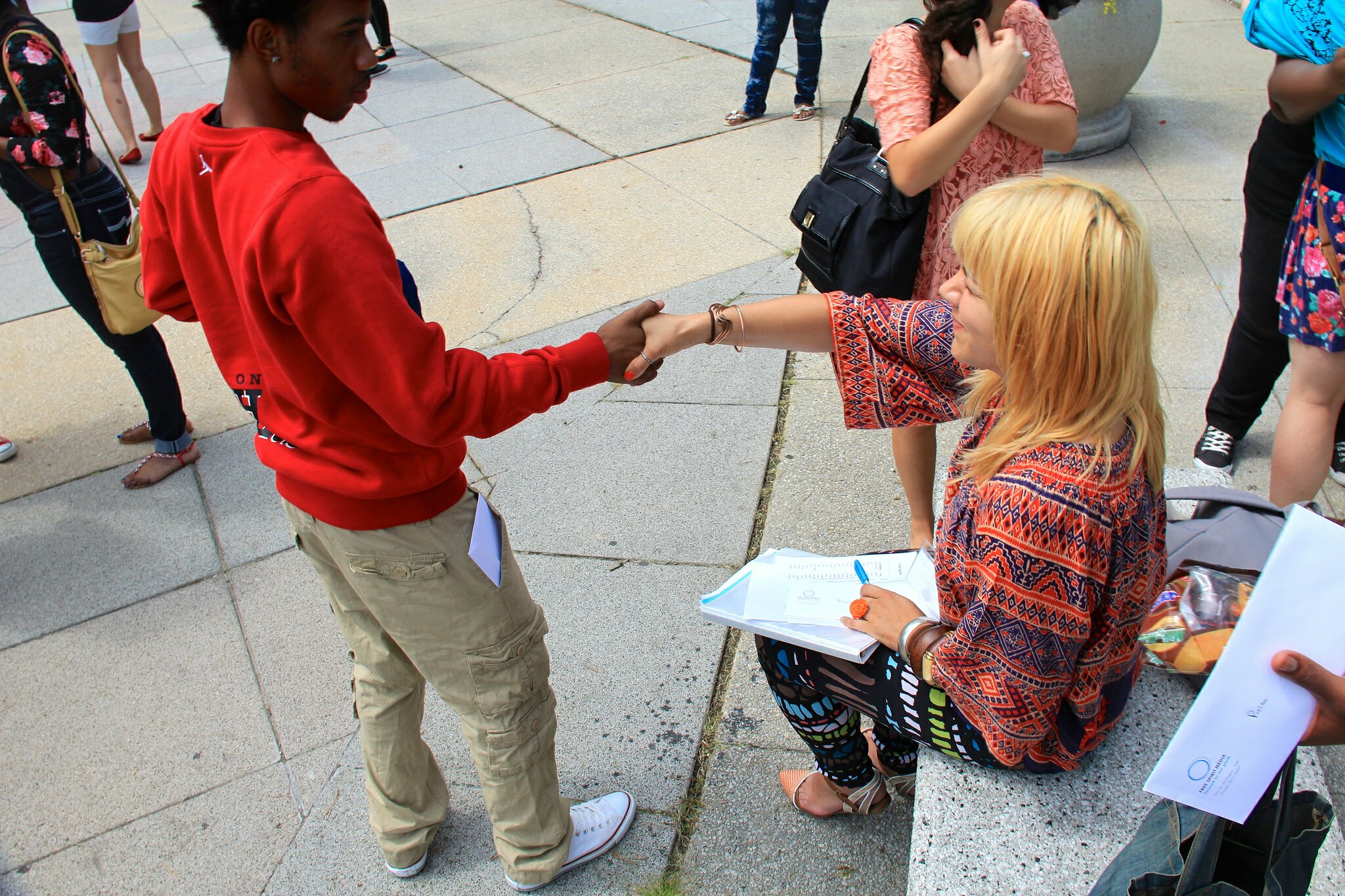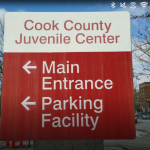As I wrote earlier this week, Suzy Connor, former senior program officer for arts and culture at The Chicago Community Trust, has joined Smart Chicago as a consultant working on a series of projects focused on arts, education, and justice.
In this context, we’re also taking on the Arts Infusion program, which Suzy has led for the last six years.The Urban Institute recently completed a comprehensive evaluation of this program: Arts Infusion Initiative, 2010–15: Evaluation Report. We are serializing some of the findings of this report that resonate with our work.
First up is a look at some of the research that is cited in the report to highlight the crushing effects of poverty, especially on neighborhoods in Chicago’s south and west sides. here are a number of the passages from the report— and links to the underlying research.
The neighborhoods served by Arts Infusion programs each have their own distinct communities and histories, yet they all reflect disturbing national trends that disproportionately affect communities of color, such as high unemployment, a high crime rate, segregation, social disenfranchisement, and poverty (Coates 2014; Moser 2014; Sampson and Wilson 1995).
*
More recently, changes in the landscape of public housing have also affected neighborhood dynamics and the lives of youth. In the 1990s, mid- and high-rise public housing complexes concentrated in the south and west sides of Chicago came to be viewed as the epicenter of the city’s problems, and public officials moved to demolish the buildings over the course of several years. The decision to tear down those properties was accompanied by a promise to improve the lives of residents, cut crime, and provide housing vouchers into mixed- income communities (Newman 2015; Eads and Salinas 2014; Crump 2002).
*
The recession also had direct and indirect effects on neighborhood stability and housing, as housing values fell across the city and sales prices fell even more steeply (Chicago Rehab Network 2011). The housing crash was felt particularly acutely in Chicago’s south and west sides: for example, by the end of 2010, one in six properties in Back of the Yards was vacant as residents abandoned their homes after falling victim to predatory lending for home equity loans (Gallun and Maidenberg 2013; Rugh and Massey 2010). The growing number of abandoned buildings in those Chicago neighborhoods further weakened their property value and contributed to social disorder (Wallace and Schalliol 2015; Chicago Rehab Network 2011).
The full citations for those links are below, but I want to call out a number of observations:
- The evidence of systematic racism and deprivation in our city is immense, astounding, and recent. This provides a setting for our work
- The number and quality of current and former Chicago-based thinkers, developers, writers and researchers in the field is heartening. These are the people with whom we toil. I’m thinking specifically of people cited here like Whet Moser, David Schalliol, David Eads, and the Chicago Rehab Network
- As we continue with the Arts Infusion project, pulling together the teaching artists who work directly with young people on careers in the arts, we have to see the work in the context of justice
More to come!
Coates, T. (2014). This town needs a better class of racist. The Atlantic. Available at http://www.theatlantic.com/politics/archive/2014/05/This-Town-Needs-A-Better-Class-Of-Racist/361443/
Moser, W. (2014). Housing discrimination in America was perfected in Chicago. Chicago Mag. Available at http://www.chicagomag.com/city-life/May-2014/The-Long-Shadow-of-Housing-Discrimination-in-Chicago/
Farmer, S. (2011). Uneven public transportation development in neoliberalizing Chicago, USA. Environment and Planning A, 43, 1154-1172. Available at http://blogs.roosevelt.edu/sfarmer/files/2013/02/Environmnet-and- Planning-final-version.pdf
*
Newman, J. (2015, March 13). Dismantling the towers. Chicago Reporter. Available at http://chicagoreporter.com/dismantling-the-towers/
Eads, D., and Salinas, H. (2014). Demolished: The end of Chicago’s public housing. National Public Radio. Available at http://apps.npr.org/lookatthis/posts/publichousing/.
Crump, J. (2002), Deconcentration by demolition: public housing, poverty, and urban policy. Environment and Planning D: Society and Space 20(5): 581 – 596. Available at http://www.envplan.com/abstract.cgi?id=d306.
*
Chicago Rehab Network. (2011). Building Our Future Chicago: A Toolkit for Residents and Community Leaders. Chicago Rehab Network: Chicago, IL. Available at http://www.chicagorehab.org/resources/docs/research/buildingchicago/buildingourfuturechicagofulltoolkit. pdf
Gallun, A., and Maidenberg, M. (2013, November 9). Will the foreclosure crisis kill Chicago? Crain’s Chicago Business. Crain’s: Chicago, IL. Available at http://www.chicagobusiness.com/article/20131109/ISSUE01/311099980/will-the-foreclosure-crisis-kill- chicago
Rugh, J. S., and Massey, D. S. (2010). Racial segregation and the American foreclosure crisis. American Sociological Review, 75(5), 629-651. Abstract available at http://asr.sagepub.com/content/75/5/629.abstract.
Wallace, D., and Schalliol, D. (2015). Testing the temporal nature of social disorder through abandoned buildings and interstitial spaces. Social Science Research, 54, 177-194. Abstract available at http://www.sciencedirect.com/science/article/pii/S0049089X15001258.






